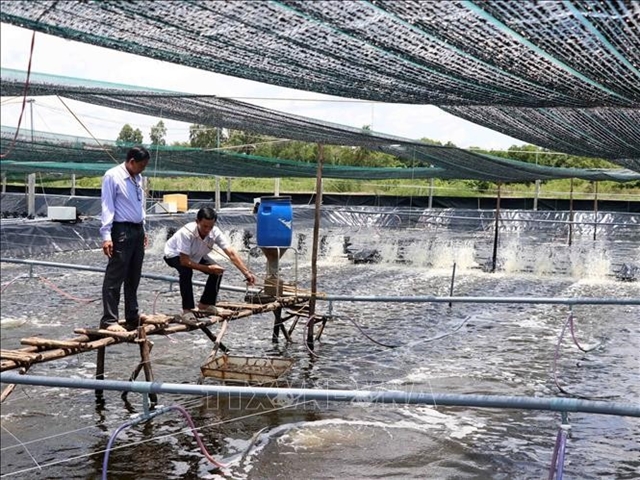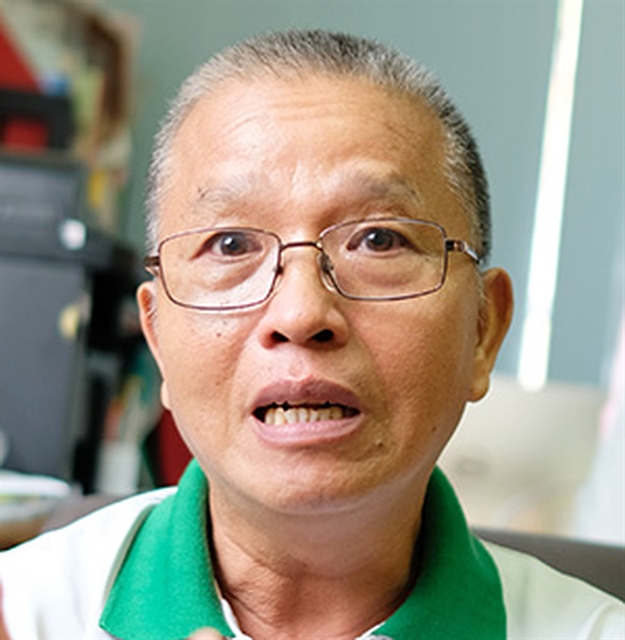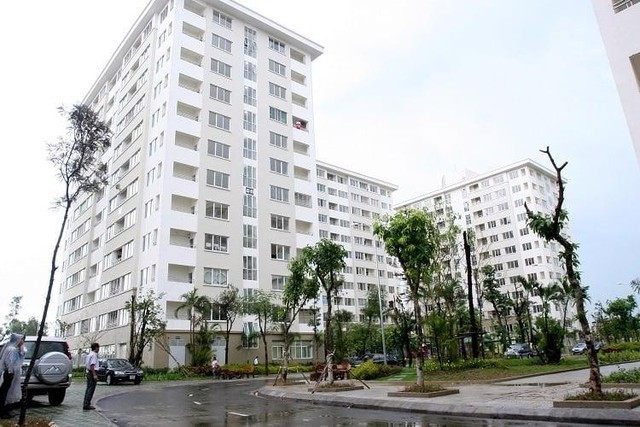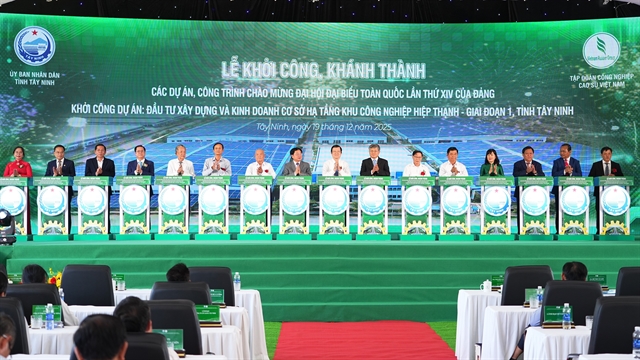 Opinion
Opinion

ĐÀ LẠT — The abuse of agricultural greenhouses has been blamed for the flooding in Đà Lạt City, in the Central Highlands province of Lâm Đồng, over the past seven years.
Tuổi Trẻ (Youth) newspaper interviewed experts and insiders about the causes and consequences for Đà Lạt City of the greenhouse issue not being handled correctly.
Vũ Ngọc Long, former director of the Southern Institute of Ecology

|
| Vũ Ngọc Long, former director of the Southern Institute of Ecology. — Photos tuoitre.vn |
Data shows that the average temperature in Đà Lạt has increased by 1 - 1.5 degree Celsius and the temperature range has expanded by 3 degrees Celsius over the past ten years.
The city's ecosystem has been harmed by agricultural activities related to greenhouses.
Greenhouses are designed to limit abnormal climate changes and minimise the impact of climate change. Light entering the greenhouses is reflected from surfaces. Some is trapped in the greenhouses while the rest is radiated back through the glass and steel materials into the surrounding air.
This causes excess heat to be released into the surrounding atmosphere. As a result, agricultural greenhouses have three main harmful effects on the environment; increasing ambient temperature, affecting soil quality and polluting water sources.
Looking at the city's greenhouses layout, we can see the greenhouses are built close together in greenhouse valleys, leaving no room for evaporation and heat loss.
People must cool the greenhouse's inside temperature when the outside temperature heats up. Therefore, tens of thousands of hectares of greenhouses require cooling. Then, this heat from the greenhouses will spread along the valley corridors covering the city, warming the atmosphere. As a result, the temperature in the central area and the city's vicinity, where many greenhouses are located, will increase.
Over the past ten years, resin trees (dipterocarpus alatus) or ironwood (hopea odorata) in the city flowered twice a year, or the flowering time was longer than usual. This is unusual and results from changing the environment to warmer temperatures and more rainfall.
The city's water sources have been polluted, the soil has been degraded, and pests have increased. The main reason is the overuse of greenhouses and specialised farming. To overcome this situation, farmers are forced to use chemical drugs, a vicious cycle that only amplifies the consequences in the long run.
As a result, soils under the greenhouses in the city and Lạc Dương District are accumulating more heavy metals like copper, zinc, chromium, manganese, lead and mercury due to the use of untreated water for irrigation. In some newly-built greenhouses, arsenic has accumulated in the soil.
In recent years, successive floods have appeared downstream of the Cam Ly stream. Greenhouses cover a large area of land, ruining natural drainage systems. Too much rainwater pouring into the stream in a short time now causes floods.
Đà Lạt, Lang Biang Plateau are the headwater of the Đồng Nai and Sêrêpôk river systems, so agricultural pollution and climate change here will have far-reaching impacts.
In the northwest, the terraced fields of the ethnic minority Mông people have been recognised as a cultural heritage and are preserved as a speciality in tourism products. Đà Lạt's vegetable and flower terraces deserved the same. Unfortunately, the area was covered with greenhouses before being recognised by the world.
Architect Nguyễn Hồ, member of HCM City Association of Architects’ Executive Committee

|
| Nguyễn Hồ, member of HCM City Association of Architects’ Executive Committee. |
In urban areas in our country, including Đà Lạt City, roads are often flooded when it rains, even if the rain is not heavy. It is a serious problem.
In Đà Lạt, the massive development of greenhouses for agricultural cultivation, especially at watershed locations such as Cam Ly, is the main reason for floods in the city.
To fix the situation, rainwater tanks must be built with slow drainage systems to collect all or most of the volume of rainfall.
Unfortunately, in the country's current construction standards, there are no specific criteria for this issue, which leads to the State's construction management and licensing agencies not requiring greenhouse investors to fulfil their obligations to the community.
The local administration needs to quickly cooperate with the Ministry of Construction to issue relevant regulations. This will contribute significantly to solving the problem of floods in the city when it rains.
Nguyễn Văn Châu, Deputy Director of the province’s Agriculture and Rural Development

|
| Nguyễn Văn Châu, Deputy Director of the province’s Agriculture and Rural Development. |
There needs to be planning for greenhouse production areas following the general landscape, minimising the negative impacts of greenhouse production areas on Đà Lạt City and Lâm Viên Plateau.
We have seen greenhouses as a high-yield farming method but they have many negative impacts. The immediate solution is to reduce the percentage of greenhouses in a cultivated area to create breathing space for the soil, increase the permeability coefficient and minimise agricultural emissions and soil degradation.
We need to issue specific regulations to fix the problem. Currently, the province is promoting the development of organic agriculture. This is an approved long-term plan to improve the quality of agricultural products but is also associated with the gradual reduction of greenhouses, improving the agricultural environment in a green direction, clean, suitable for the general landscape as well as being close to agricultural tourism activities.
Ph.D Lee Hyun Suk, South Korea’s National Institute Biological Resources

|
| Lee Hyun Suk, South Korea’s National Institute Biological Resources. |
I have lived in Đà Lạt for a decade, researching biodiversity. The encroachment of greenhouses on the landscape is not a small loss. I know there is a very extreme scenario related to the city's environment that happened inside and outside the greenhouses. To solve the problem, the following measures should be taken immediately.
The principle of rotational farming for greenhouses must be introduced. For example, if there are ten greenhouses, farmers should only cultivate seven of them. The remaining three greenhouses are saved to be used for the next season. After a few seasons, they should remove the ceiling of the greenhouses to open cultivation.
The right density must also be chosen. Currently, in the two flower villages of Vạn Thành and Thái Phiên, greenhouse density reaches up to 50-70 per cent. In South Korea, the density is normally only 30 per cent.
Eliminating greenhouses immediately is impossible. I suggest that while making the greenhouse management plan, the province and the central management agency develop biotechnology and seedlings and then gradually deploy them so that farmers keep pace with the changes.
Finally, there must be a tightening of management so that farmers gradually have environmentally-friendly production habits. In South Korea and Japan, in the seasons with favourable weather, natural enemies of insects are introduced into the environment to protect the people's agricultural products. Greenhouses are not a high-tech cultivation method; it is just a farming option. — VNS




